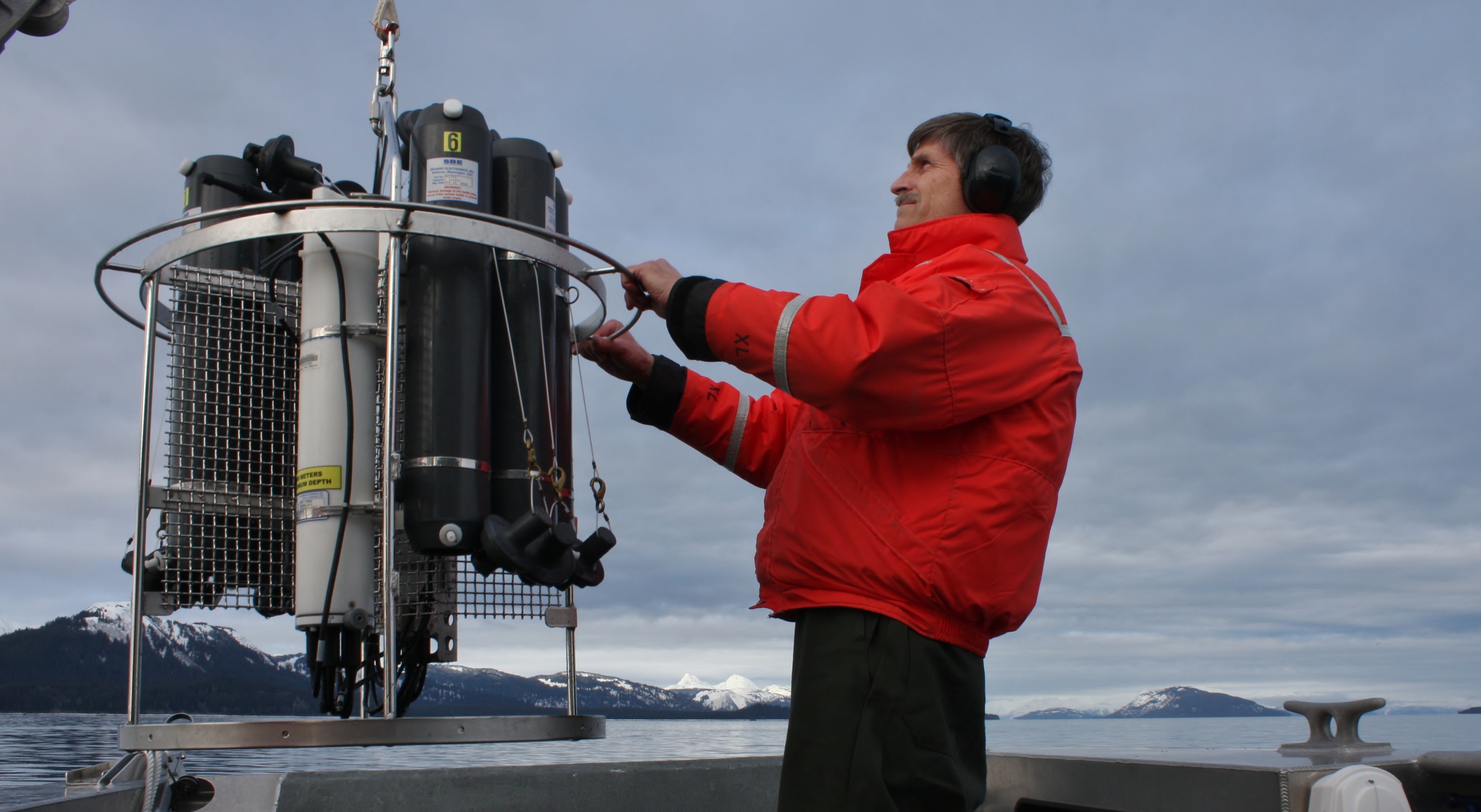
The "warm blob" has remained a little bit off shore along the coast of the Northern Pacific.
Scientists aren't sure exactly what caused the Blob to form (and persist). But it likely has to do with a strong high pressure region in the overlying atmosphere that has remained "parked" in place for many months. This has caused warmer-than-usual air temperatures, as well as reduced winds that normally mix and cool the ocean surface.
Does the Blob extend into Glacier Bay? Apparently not so far –oceanographers along the west coast of North America say that in most places the edge of the Blob seems to be staying offshore. And this is confirmed by the park's own long-term oceanographic monitoring program which was designed for just this sort of question. A preliminary comparison of the 2014-15 monthly sampling data to the 20-year "pre-Blob" average indicates that sea surface temperatures (integrated over the upper 20 meters of the ocean in central Glacier Bay) have not been appreciably warmer than usual. There is some suggestion that temperatures in 2015 have been slightly warmer (perhaps by roughly 0.5 –1.0 degree C), but we're certainly not seeing anything approaching the three-degree warming that is being observed in the warmest parts of the Blob. Again, a couple degrees is a big difference for the ocean!

Park ecologist, Lewis Sharman, conducts regular oceanography surveys in Glacier Bay.
So, why should we be interested in the Blob? Well, you also may have heard about some unusual biological ocean phenomena in recent months –intense and sometimes toxic phytoplankton "blooms", seabird and marine mammal die-offs, and certain fish species observed farther north than normal (ocean sunfish, pomfret, blue and thresher sharks, skipjack tuna). This blog post has more information about some of these changes. Many scientists partially attribute these phenomena to the Blob's warmer-than-normal ocean surface temperatures. If these conditions persist, they may result in fundamental and profound shifts in how the ocean works in our part of the world.As one version of the story goes, warmer surface water temperatures and associated reduced deep-water upwelling of nutrient-rich water may result in lower phytoplankton production. Which means less food for zooplankton (and the forage fishes that eat the zooplankton). At different times in their life cycle, Pacific salmon rely on both for their food. So it's possible that all this could translate into a future with fewer salmon.
No one knows what's going to happen with the Blob.But oceanographers and biologists will continue to closely watch conditions in Glacier Bay for indications that its effects are being felt here.If you'd like to keep abreast of "Blog news" in general, visit the Alaska "blob" tracker blog.
